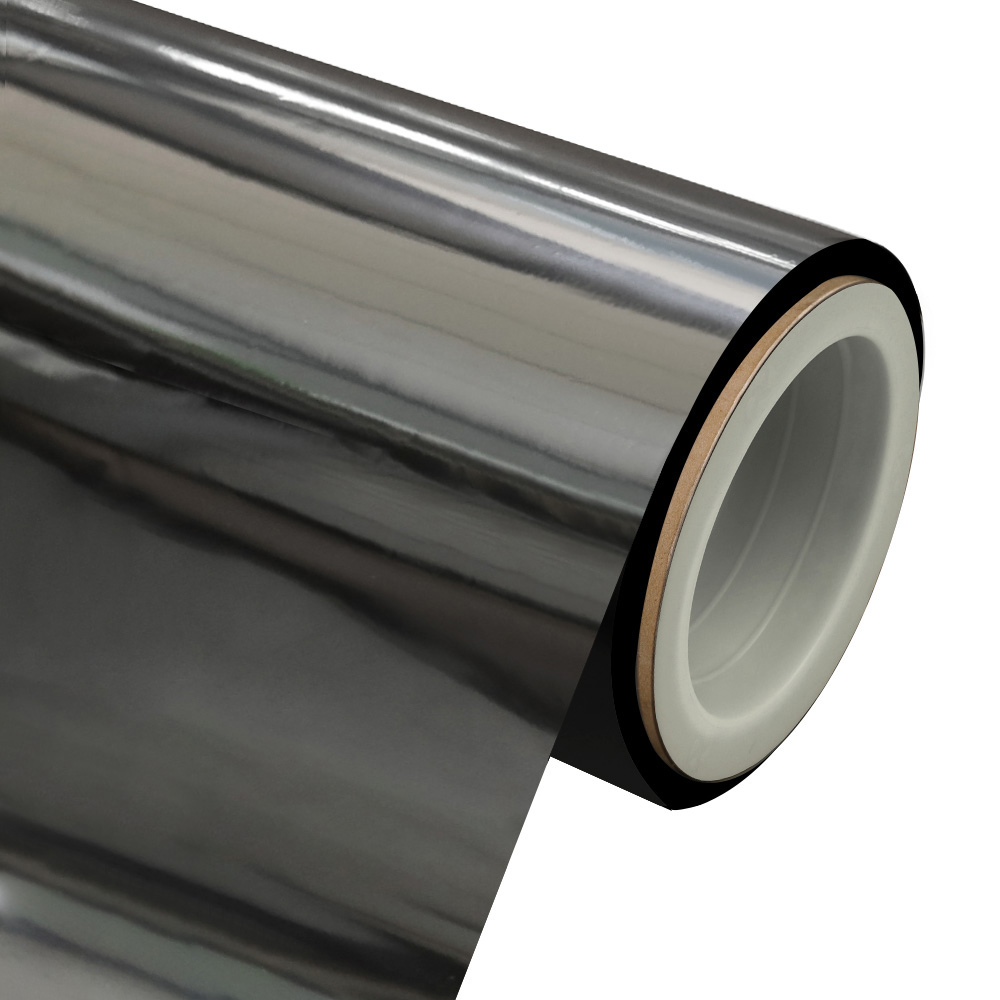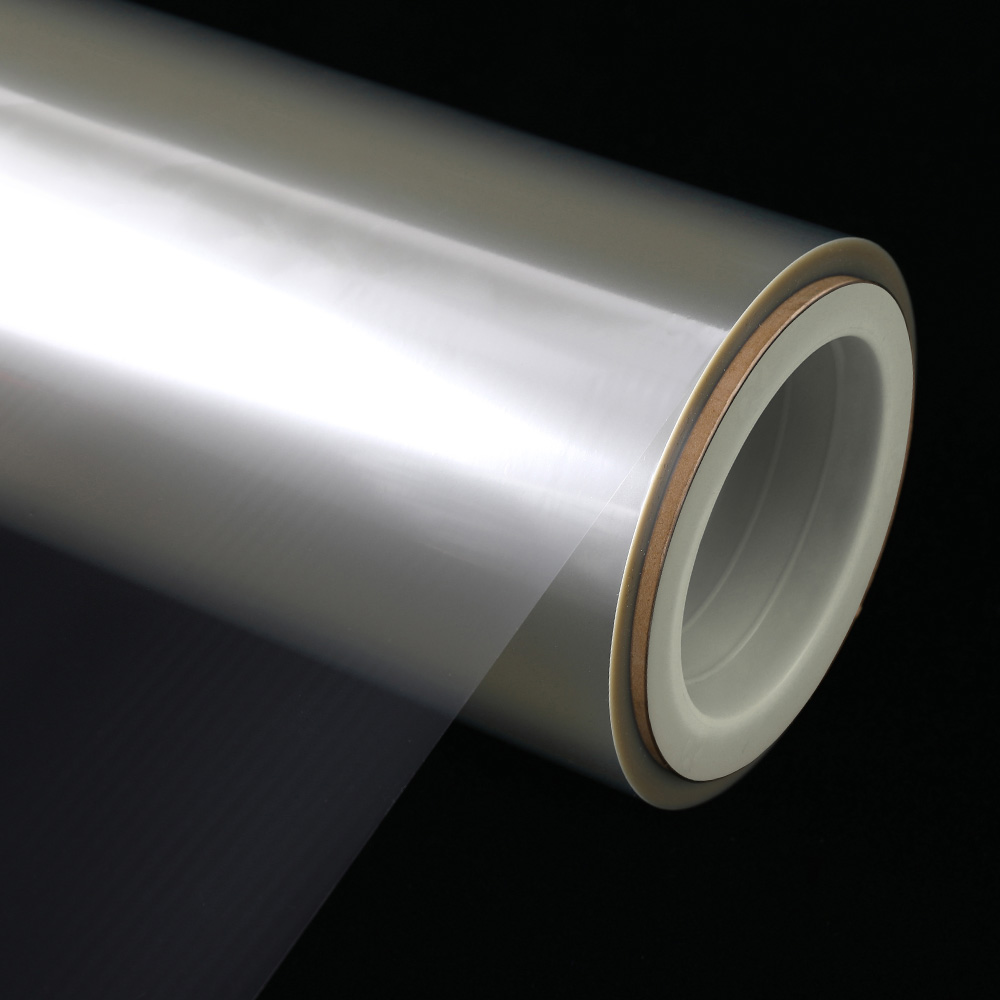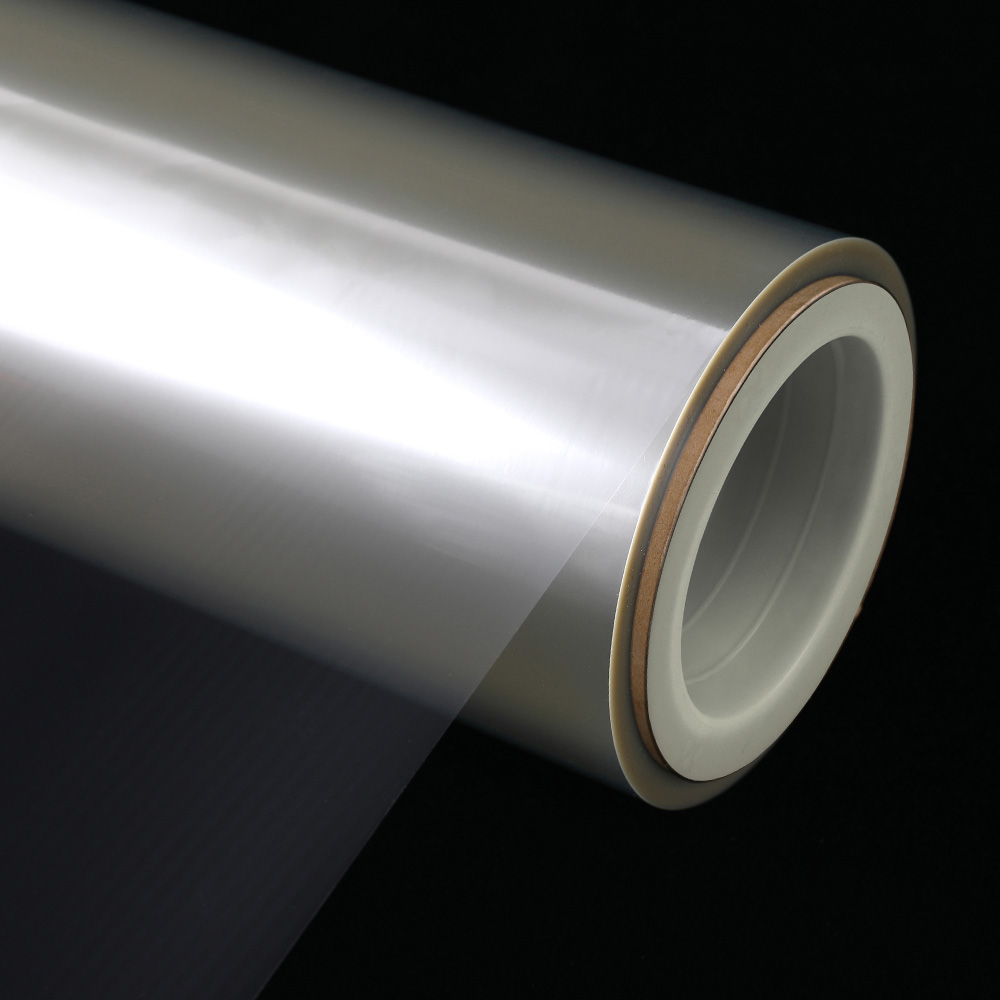What’s the Difference Between Standard and Chemically Treated Metallized PET Film?
In the world of high-performance flexible materials, metallized polyester (PET) films are a cornerstone, renowned for their excellent barrier properties, aesthetic appeal, and mechanical strength. However, a common point of confusion and inquiry among specifiers, buyers, and engineers lies in the distinction between standard metallized PET film and its advanced counterpart: chemical treated metallized PET film. While they may appear similar at a glance, the differences are profound and have significant implications for performance, application, and value. Understanding this distinction is not merely an academic exercise; it is a critical step in selecting the right material to ensure product integrity, manufacturing efficiency, and end-user satisfaction.
The Fundamental Building Blocks: Understanding the Base Materials
To appreciate the differences, one must first understand the common ground. Both standard and chemical treated metallized PET film begin with a polyester film substrate. This substrate is a thermoplastic polymer known for its high tensile strength, dimensional stability, and resistance to a wide range of chemicals and temperatures. The next step for both is the metallization process, typically achieved through vacuum deposition. In this high-vacuum chamber, a metal source, most commonly aluminum, is heated to its vaporization point. The metal vapor then condenses onto the cool, moving surface of the PET film, forming a thin, uniform metallic layer. This layer is what provides the characteristic reflective appearance and the fundamental barrier against gases like oxygen and water vapor, as well as light.
At this stage, the product is a standard metallized PET film. It possesses a set of baseline performance characteristics that make it suitable for many applications. However, its functionality is limited by the inherent surface properties of the deposited metal layer. The metallic surface, while excellent for barrier and aesthetics, can present challenges for downstream processing. It is at this precise juncture that the path diverges, and the creation of chemical treated metallized PET film begins. The standard film is the foundational canvas, and the chemical treatment is the specialized coating that unlocks a higher tier of performance and versatility.
The Defining Process: What is Chemical Treatment?
The term “chemical treatment” refers to an additional post-metallization manufacturing step where a specialized functional coating is applied to the metal layer. This is not a simple surface alteration but the application of a precisely formulated chemical layer designed to modify the surface energy and chemical functionality of the film. The process is highly controlled, ensuring a consistent and uniform application that is critical for performance.
This treatment can be applied to one or both sides of the film, depending on the intended end-use. For instance, a treatment on the metallized side is often designed to enhance adhesion, while a treatment on the non-metallized (PET) side might be engineered to improve printability or provide a heat-sealable surface. The chemistry of these coatings is proprietary and tailored to achieve specific outcomes, such as:
- Improved Surface Energy: The untreated metal surface has a relatively low surface energy, which makes it hydrophobic and oleophobic, resisting the spread of water- and oil-based substances like adhesives and inks. The chemical treatment significantly increases the surface energy, making the film hydrophilic and oleophilic. This allows for better wetting, which is the foundational requirement for strong adhesion and high-quality printing. Better wetting ensures that inks and adhesives form a continuous, intimate film on the surface rather than beading up.
- Creation of Reactive Functional Groups: The treatment can introduce specific chemical groups (e.g., carboxyl, hydroxyl, amine) to the surface. These groups can form primary chemical bonds (covalent bonds) with molecules in adhesives or printing inks, creating an adhesion that is vastly stronger and more chemically resistant than the mechanical interlocking that occurs with an untreated surface.
- Protection of the Metal Layer: The treatment acts as a protective barrier, shielding the delicate aluminum layer from oxidation, abrasion, and chemical attack during handling, conversion, and the product’s lifetime.
It is this additional manufacturing step that transforms a standard barrier film into a high-performance, functional substrate, creating a chemical treated metallized PET film capable of meeting the stringent demands of advanced applications.
A Head-to-Head Comparison: Performance Characteristics
The impact of the chemical treatment becomes starkly evident when comparing the key performance characteristics of the two films side-by-side. The differences are not incremental; they are fundamental to whether the material will succeed or fail in a given application.
Adhesion and Lamination Performance
This is arguably the most significant differentiator. In standard metallized PET film, adhesion relies primarily on mechanical bonding. The adhesive anchors itself into the microscopic pores and imperfections of the metal surface. This bond is often weak and can be susceptible to failure under stress, heat, or humidity, a phenomenon known as delamination.
In contrast, chemical treated metallized PET film is engineered for superior adhesion. The treated surface facilitates both mechanical and chemical bonding. The increased surface energy ensures excellent wetting, allowing the adhesive to spread evenly and make maximum contact. More importantly, the functional groups on the treated surface can form covalent chemical bonds with the adhesive. This results in a lamination bond strength that is several times greater than what is achievable with standard film. This superior bond is essential for flexible packaging structures that undergo stress during filling, transportation, and use, and for applications where long-term durability is paramount, such as in outdoor insulation or automotive components.
Barrier Properties and Their Stability
Both films provide excellent barrier properties against moisture vapor and oxygen. However, the stability and durability of this barrier are where they differ. The aluminum layer in a standard film is vulnerable to physical damage, such as pinholes and cracks, which can occur during handling or conversion processes like printing and lamination. These micro-failures significantly compromise the barrier.
A chemical treated metallized PET film offers a more robust barrier. The treatment coating itself can provide a secondary barrier and, crucially, it protects the metal layer from abrasion and corrosion. Furthermore, during lamination, the superior adhesion prevents the formation of stress points that can lead to micro-cracking in the metal layer. Therefore, while the initial barrier values might be similar when measured on pristine samples, the chemical treated metallized PET film is far more likely to maintain its high barrier performance through the conversion process and the lifecycle of the final product. This ensures consistent shelf life for food products and reliable protection for sensitive electronic components.
Printability and Surface Quality
Printing directly onto a standard metallized PET film is challenging. The low surface energy causes inks to retract, leading to poor adhesion, pinholing, and an inconsistent print finish. This often necessitates the use of a primer, which adds an extra step, cost, and potential variability to the manufacturing process.
The chemical treated metallized PET film is designed to be a premium printing substrate. Its high surface energy allows inks to lay down smoothly and uniformly, resulting in vibrant graphics and excellent opacity. The chemical bonding between the ink and the film surface ensures that the print is durable and resistant to scratching and rubbing. This is a critical feature for applications where brand presentation and label integrity are important, such as in high-value consumer packaging and durable labels.
Chemical and Abrasion Resistance
The untreated aluminum surface is susceptible to oxidation and reaction with acidic or alkaline substances, which can dull the appearance and degrade the barrier properties. It is also relatively soft and prone to scratching.
The treatment on a chemical treated metallized PET film encapsulates the metal layer, shielding it from environmental factors and chemical agents. This treated surface is typically much more resistant to abrasion, maintaining its reflective brilliance and functional integrity even under harsh handling conditions. This makes it the material of choice for technical applications where the film may be exposed to chemicals or mechanical wear.
The following table provides a concise summary of this performance comparison:
| Performance Characteristic | Standard Metallized PET Film | Chemical Treated Metallized PET Film |
|---|---|---|
| Adhesion/Lamination | Moderate; primarily mechanical bonding. Prone to delamination. | Excellent; combines mechanical and chemical bonding. High bond strength and durability. |
| Barrier Stability | Good initially, but vulnerable to degradation from abrasion and handling. | Superior; treatment protects the metal layer, maintaining barrier integrity through conversion and use. |
| Printability | Poor; requires primers for acceptable ink adhesion. | Excellent; high surface energy allows for direct, high-quality, and durable printing. |
| Chemical Resistance | Low; metal layer can oxidize or corrode. | High; treatment layer protects the metal from chemical attack. |
| Abrasion Resistance | Low; metal layer is easily scratched. | High; treatment layer acts as a protective shield. |
| Primary Bonding Mechanism | Mechanical interlocking. | Chemical bonding and mechanical interlocking. |
Application-Based Selection: Choosing the Right Film
The choice between standard and chemical treated metallized PET film is ultimately dictated by the end application. Using the wrong type can lead to product failure, manufacturing inefficiencies, and ultimately, higher costs.
Applications for Standard Metallized PET Film
Standard film is perfectly adequate for applications where the primary requirements are aesthetics and a basic barrier, and where the film is not subjected to demanding lamination, printing, or environmental stress. Common uses include:
- Decorative Laminates: Where the film is encapsulated within a rigid structure and its surface is not subject to further processing.
- Label Facestocks: For simple applications where the label is not exposed to abrasion or chemicals.
- Insulative Layers: In some simple electrical applications where adhesion is not a critical factor.
- Gift Wraps and Decorative Ribbons: Where visual appeal is the primary function.
In these applications, the cost-effectiveness of the standard film makes it the logical choice.
Applications for Chemical Treated Metallized PET Film
The advanced properties of chemical treated metallized PET film make it indispensable for demanding, high-value applications where performance and reliability cannot be compromised. Key industries and uses include:
- High-Performance Flexible Packaging: This is a primary application area. It is used in structures for stand-up pouches, liquid packaging, and retort packaging for foods and pet food. The superior adhesion prevents delamination during the filling, sealing, and sterilization processes (like retorting). The robust barrier ensures extended shelf life for sensitive products, protecting them from oxygen and moisture.
- Durable Labels and Graphics: For products that require labels resistant to abrasion, moisture, and chemicals, such as those for automotive parts, industrial chemicals, and outdoor equipment. The excellent printability ensures that branding remains intact and legible.
- Advanced Industrial Laminates: Used in the production of insulation materials, radiant barriers, and composite structures where strong, durable bonds between layers are critical for long-term performance and safety.
- Electronics and Specialties: As a barrier and protective component in flexible printed circuits and other electronic devices where consistent performance is non-negotiable.
In these scenarios, the initial higher material cost of the chemical treated metallized PET film is offset by reduced manufacturing waste, fewer line failures, and a superior end-product that enhances brand reputation and minimizes the risk of returns or failures in the field.
Conclusion: A Strategic Choice for Performance and Value
The difference between standard and chemical treated metallized PET film is a testament to how a targeted material science innovation can transform the capabilities of a base product. It is not a minor variant but a fundamentally different material engineered for a different class of challenges. The standard film offers a cost-effective solution for basic barrier and decorative needs. In contrast, the chemical treated metallized PET film is a high-performance engineered material that delivers superior adhesion, durable barrier properties, excellent printability, and enhanced chemical resistance.
The choice between them is a strategic one. For applications where the material will be subjected to adhesives, printing, mechanical stress, or demanding environmental conditions, the specified use of chemical treated metallized PET film is not just an upgrade—it is a necessity for ensuring product integrity, manufacturing efficiency, and ultimate success in the marketplace. By thoroughly understanding these differences, buyers, engineers, and specifiers can make confident, informed decisions that optimize both performance and total cost, ensuring the right material is selected for the right job.


 English
English  中文简体
中文简体 





